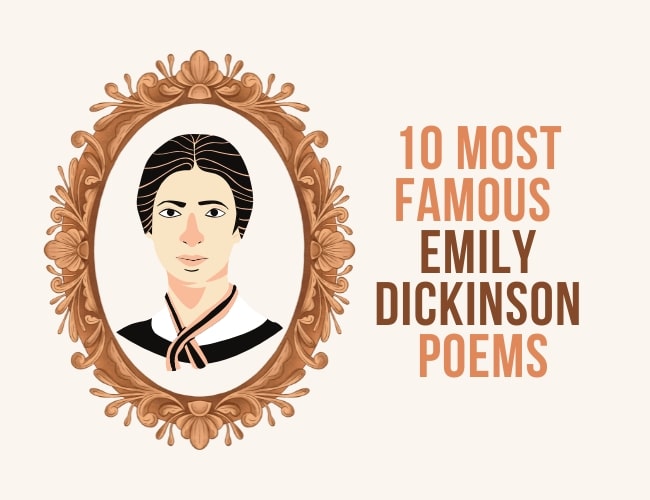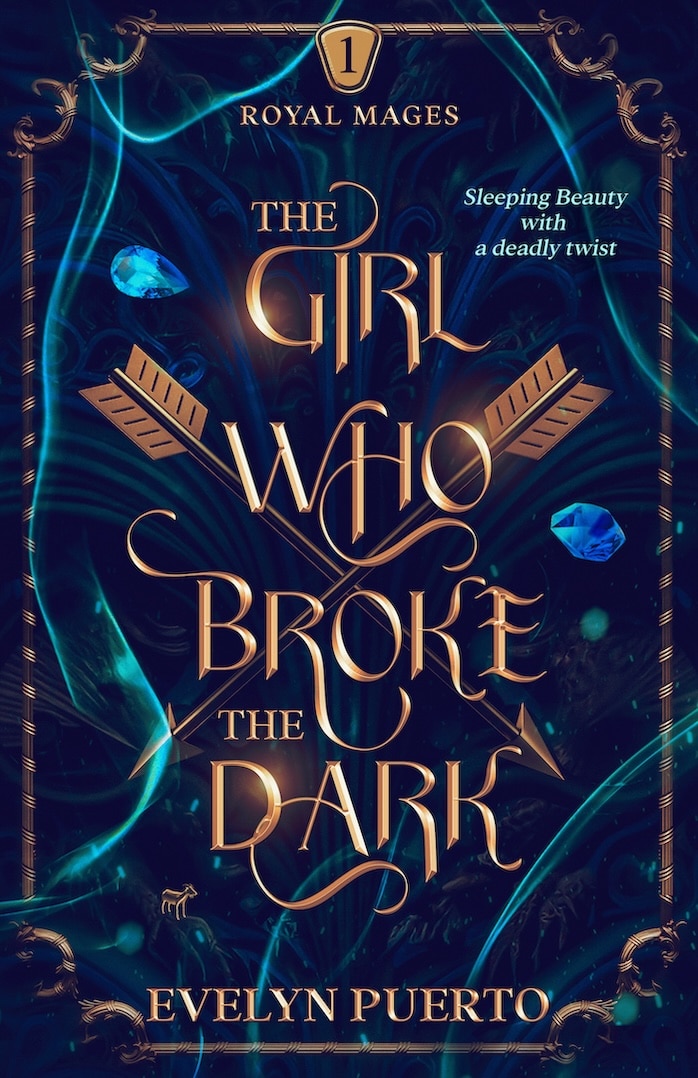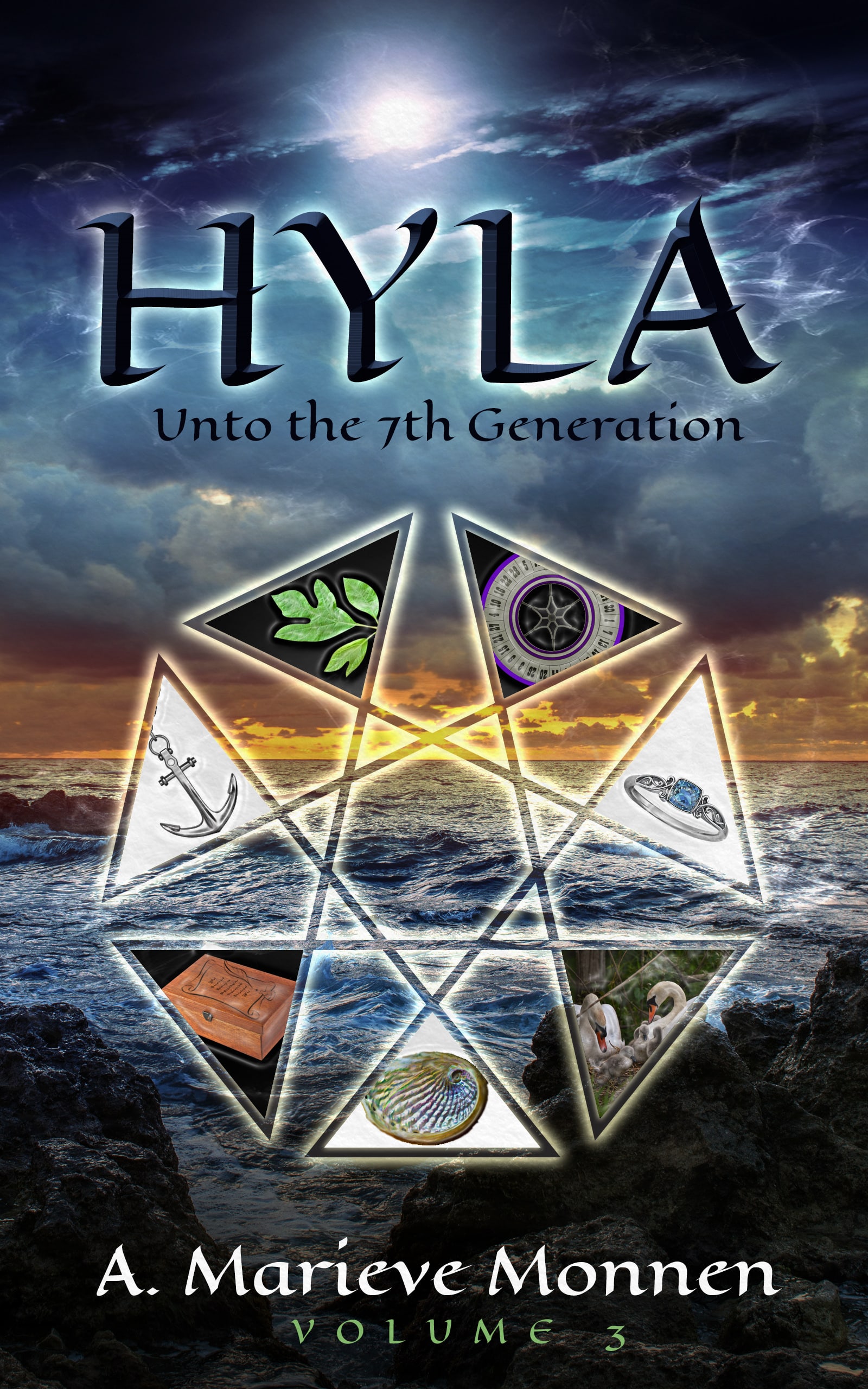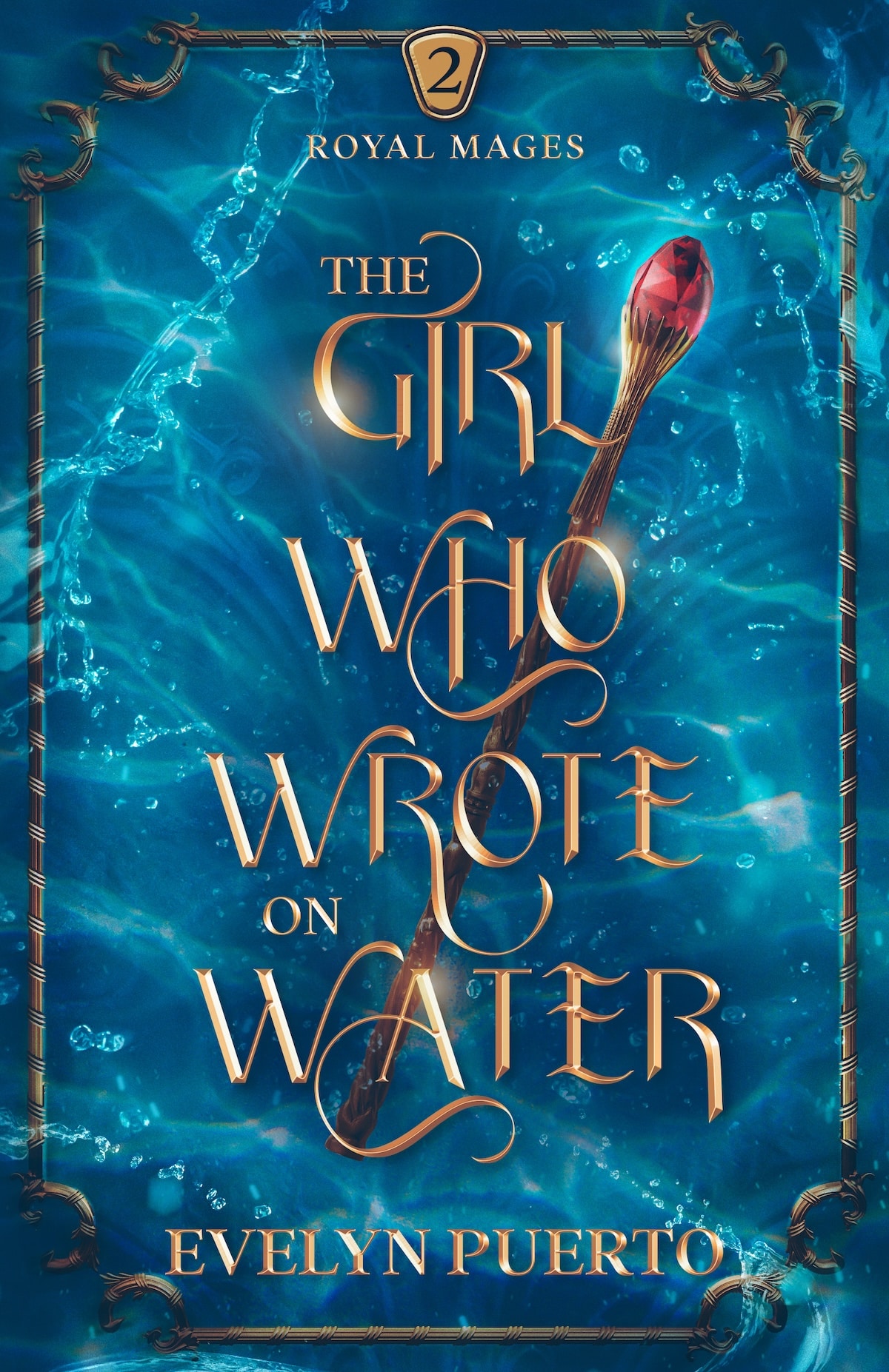Emily Dickinson is one of the most famous and original American poets. Her style challenged the typical poetic formats of her time, and her poems are enjoyed by people of all walks of life. Here are some of the most famous Emily Dickinson poems.

Today's article is by Cora Weems, a Write Practice intern who studied poetry and literature at the University of South Carolina. She shares some of her favorite poems with us for National Poetry Month. Welcome Cora!
When you study American poetry, it's almost certain you will take time with Emily Dickinson. She is considered by many to be one of the most prolific poets of the 19th century, despite only having ten poems published during her lifetime, and those without attribution.
After her death, her papers revealed an astonishing amount of work—almost 1800 poems!
Dickinson's poetry is straight-forward, almost brutally so. Many of her poems are as short as a single stanza, and her speakers are clear-sighted and observant.
Almost all of her poetry was published after her death, which meant her poems could be written purely for herself. But before we look at her most famous poems, let's learn a little about who she was.
Who is Emily Dickinson?
Dickinson was born in 1830 in Amherst, Massachusetts to a moderately privileged family. She lived in seclusion with her sister for the majority of her life, never marrying, but she spent a large amount of her time writing letters and poems.
Though she attended Amherst Academy, she was kept home for many of her early years because her parents saw her as frail. Despite this, she excelled in the subjects she was taught, especially when it came to composition.
Dickinson was brought up under Calvinism, the belief that we're born depraved and can only be saved through the acceptance of Jesus Christ. She appeared to question this faith in her later years, and never joined the same congregation the rest of her family did.
Her poems do, however, still show evidence that she believed in, or perhaps was just influenced by, the immortality of the soul, although her actual religious beliefs aren't known.
She suffered a lot of tragedy in her adult years, from losing many of her friends to the loss of her father and mother. She ceased any contact with anyone, even her sister, in the final three years of her life, and died at age 55 of a stroke.
A lot of the poems we have are from her letters, but she kept a majority of them to herself, compiling them into booklets and neater manuscripts during her adult years. These were never published in her lifetime, and it's not known if she ever had the intention of publishing them.
Her sister found these manuscripts after her death and turned them over to a friend for editing and publishing. Poems By Emily Dickinson was published in 1890 by that friend, Mabel Loomis Todd, with the help of Thomas Wentworth Higginson as editor.
But because of some ongoing affairs between Todd and Dickinson's brother, her poems were split between the Amherst College Library and Harvard University's Houghton Library by Todd's daughter and Dickinson's niece, respectively. This led to negative effects on interpretations of Dickinson's work up to even now.
Most Famous Emily Dickinson Poems
Here is a list of what I personally believe are Dickinson's most famous poems, in descending order. I will include excerpts for all, but some will include the full poem because they truly were that short.
10. If I Can Stop One Heart From Breaking
“If I can stop one heart from breaking,
I shall not live in vain;
If I can ease one life the aching,
Or cool one pain,
Or help one fainting robin
Unto his nest again,
I shall not live in vain.”
This short poem has a sentiment that many people share: that if they can help at least one person, their life will have been well-lived. It's a poem that reflects on how valuable existence is, to the point where even saving just a single existence will make your own worth while.
This poem is well-known for that reason, beyond the fact that it's recently become a song title.
9. I Heard a Fly Buzz – When I Died
“I heard a Fly buzz – when I died –
The Stillness in the Room
Was like the Stillness in the Air –
Between the Heaves of Storm –The Eyes around – had wrung them dry –
and Breaths were gathering firm
For that last Onset – when the King
Be witnessed – in the Room –. . .”
This poem is spoken from the voice of someone on their deathbed. It's somber and holds up the dignity of death alongside the persistence of nature.
8. It was Not Death, for I Stood Up
“It was not Death, for I Stood up,
And all the Dead, lie down –
It was not Night, for all the Bells
Put out their Tongues, for Noon.It was not Frost, on my Flesh
I felt Siroccos – crawl –
Nor Fire – for just my marble feet,
Could keep a Chancel, cool –. . .”
There is a reading guide offered by the Poetry Foundation alongside this poem that summarizes its meaning beautifully: “If despair was a song, wouldn’t it sound like this: clipped, repetitive, taut—as imperative as church music, as regular as a ballad’s refrain?”
This song is about how some things can feel as terrible as death without actually dying.
It's a poem that speaks to the reader's sense of resilience. That even as terrible, harsh things happen in our life, we do not stop there, we continue living.
7. I Felt a Funeral, in My Brain
“I felt a Funeral, in my Brain,
and Mourners to and fro
Kept treading – treading – till it seemed
That Sense was breaking through –And when they all were seated,
A Service, like a Drum –
Kept beating – beating – till I thought
My mind was going numb –. . .”
Some say that this is Dickinson's greatest attempt at showcasing declining mental health. The scene is a funeral inside the speaker's mind, but there's no real mention of what they're grieving.
It talks about how overwhelming the noises are, the pacing of the mourners, the beating of a drum in lieu of the typical service, and the creaking of the “box” (that is presumably a coffin).
Against that scene, the greater world doesn't seem to care about any of it. All of it comes together until the speaker loses themselves among it and cuts off. They're left alone in this space.
Many people seemed to connect to this idea of loneliness amidst their despair with this poem, leading to its popularity.
6. The Heart Asks for Pleasure First
“The Heart asks for Pleasure – first –
And then – Excuse from Pain –
And then – those little Anodynes
That deaden suffering –And then – to go to sleep –
And then – if it should be
The will of its Inquisitor
The privilege to die –“
Perhaps at this point in the list you can get an idea of the types of themes Dickinson liked to write about. The extreme swings of emotions, whether that be joy or sorrow, seemed to interest her, and so there are a number of poems musing on them.
This poem seems to speak to a lot of people's inner struggles with finding a way to be content in life. Sometimes, it's easier to accept not being happy if you can find a way to be content. After all, sometimes “pleasure,” as Dickinson puts it, can only come after pain.
Life is full of ups and downs, and this poem explores those states.
5. Success is Counted Sweetest
“Success is counted sweetest
By those who ne'er succeed.
To comprehend a nectar
Requires sorest need.Not one of all the purple Host
Who took the Flag today
Can tell the definition
So clear of victoryAs he defeated – dying –
On whose forbidden ear
The distant strains of triumph
Burst agonized and clear!”
This poem is popular because it connects to what most of us have been told in schools or by other people: that in order to succeed, we have to fail. Success comes to those who tirelessly and endlessly work towards it.
It also speaks to the notion that we typically only want things we do not have—that our want for success comes from a perceived lack of it. Therefore, people who naturally feel successful (whether that's by being wealthy, popular, or something similar) won't value or feel as deeply about succeeding.
We value success deeply when we recognize our failings, and because of that, we are able to strive more passionately towards success.
4. My Life had Stood – A Loaded Gun
“My Life had Stood – A Loaded Gun –
In Corners – till a Day
The Owner passed – identified –
And carried Me away –And now We roam in Sovreign Woods –
And now We hunt the Doe –
And every time I speak for Him
The Mountains straight reply –. . .”
Beyond the striking title and first line, the poem can seem a bit ambiguous. The speaker is portrayed as a literal gun, with the focus of the poem being the owner of said gun.
It could be said that this poem is a metaphor for female rage, for the position that women traditionally held in society, only able to be recognized once “owned” by a man. All their power, financially or otherwise, came from men.
It's read this way because there really is no defined speaker in most of Dickinson's poems, so they could be taken as being Dickinson herself. Dickinson never married, but she was acutely aware of the position she held as a woman in her society, which could have led to this poem.
3. “Hope” is the Thing With Feathers
” “Hope” is the thing with feathers –
That perches in the soul –
And sings the tune without the words –
And never stops – at all –And sweetest – in the Gale – is heard –
And sore must be the storm –
That could abash the little Bird
That kept so many warm –I’ve heard it in the chillest land –
And on the strangest Sea –
Yet – never – in Extremity,
It asked a crumb – of me.”
This poem has a line that I believe everyone has heard at least once, even if it only sounds vaguely familiar. The message is simple: that Hope is something that we all can have and that costs absolutely nothing.
It can withstand most any “storm,” and it connects us to others. You don't have to have money or power or any sort of position to have hope, and hope is something that drives us to be better and do better every day. It's what starts the cycle of good things in the world.
We believe and hope to be better, and so we strive towards that goal. And along the way, we end up helping others, because that's just how life works sometimes.
2. Because I Could Not Stop for Death
“Because I could not stop for Death –
He kindly stopped for me –
The Carriage held but just Ourselves –
And Immortality.We slowly Drove – He knew no haste
And I had put away
My labor and my leisure too,
For His Civility –We passed the School, where Children strove
At Recess – in the Ring –
We passed the Fields of Gazing Grain –
We passed the Setting Sun –Or rather – He passed Us –
The Dews drew quivering and Chill –
For only Gossamer, my Gown –
My Tippet – only Tulle –We paused before a House that seemed
A Swelling of the Ground
The Roof was scarcely visible –
The Cornice – in the Ground –Since then – ’tis Centuries – and yet
Feels shorter than the Day
I first surmised the Horses’ Heads
Were toward Eternity -“
This poem is popular for the kind image it gives to Death. It doesn't shy away from the finality of death, but meets it for a ride.
Typically, Death is portrayed as this harsh, cold being that is inevitable and always in pursuit. But with Dickinson's poem, Death comes by and picks her up in a carriage. They take a nice ride around the place the speaker calls home until they arrive at the speaker's gravestone and, subsequently, their afterlife.
It's a peaceful, quite scenic ride, and Death is depicted as this thoughtful, considerate being who came to pick up the speaker because they were too busy with worldly pursuits. It also touches on immortality after death, as the speaker only encounters it upon boarding Death's carriage.
It's a bit comforting, in a strange way, because it tells us that there is peace after death, and that it is the end of worldly labors and pursuits.
1. I'm Nobody! Who are you?
“I’m Nobody! Who are you?
Are you – Nobody – too?
Then there’s a pair of us!
Don’t tell! they’d advertise – you know!How dreary – to be – Somebody!
How public – like a Frog –
To tell one’s name – the livelong June –
To an admiring Bog!”
This poem is one of the most popular of Dickinson's because it's the one where we can best feel her poetic voice. There's her signature dashes scattered through the poem, alongside the capitalization. And the message is one that easily connects with readers too.
Sometimes, it's hard to be “somebody,” or to be yourself. Sometimes, it's easier to be “no one” and not have any of the expectations or assumptions that are connected to you. It speaks to the want for escape that we all have.
Explore more of Emily Dickinson's Most Famous Poems
Although I have made a list of what I believe are Dickinson's most famous poems, she wrote nearly 1,800 in her life time. There are far, far more poems of hers to be discovered and read elsewhere.
These are some of her more well-known poems, but try to find a favorite of your own, one that's not on this list. With the exception of some vocabulary that we don't really use anymore, her poems have a musicality and a straightforward voice that is easy to understand.
Want to read more of our favorite poems for National Poetry Month? Check out our article, also written by Cora Weems, on 10 of Langston Hughes' Most Famous Poems.
What is your favorite Emily Dickinson poem? Share in the comments.
PRACTICE
Set the timer for fifteen minutes. Compare an experience (death, hope, freedom, beauty) to something in nature, working to create a visual image of that experience.
When you've finished, share your practice in the Pro Practice Workshop, and leave feedback for a few other writers. Not a member? Join us.
This article is by a guest blogger. Would you like to write for The Write Practice? Check out our guest post guidelines.



Beautifully picked and presented.
I never stopped for death……
I am familiar with her work, but still enjoy treading her perimeters of thought. For her life to be any different, would make all our lives different. So, I rejoice in her solitary life that shadows our present ones. We are all poets in one way or another, but some are more so. To great writing.